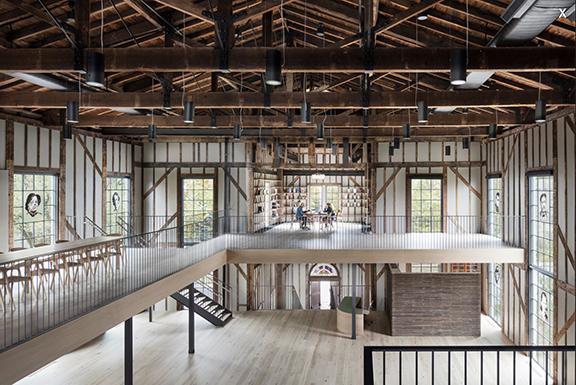Alastair Gordon is a critic, curator, cultural historian, and author who has written on art, architecture, and the environment for publications ranging from The New York Times and The Wall Street Journal to Architectural Digest, Vanity Fair, and Le Monde.
A longtime resident of the East End who is now based in Pennsylvania, Mr. Gordon's many books include "Weekend Utopia: Modern Living in the Hamptons," "Beach Houses: Andrew Geller," and "Romantic Modernist: The Life and Work of Norman Jaffe Architect."
Last year he launched "Poetics of Place," an ElectraCast podcast whose three episodes, says its website, explore "the healing impact of good design in an increasingly complex and troubled world." The subjects reflect the range of Mr. Gordon's interests.
The most recent podcast is a 37-minute conversation with the artists Eric Fischl and April Gornik, and the architect Lee Skolnick, about The Church in Sag Harbor, which Mr. Fischl and Ms. Gornik founded and Mr. Skolnick designed. Guided by Mr. Gordon's astute observations and queries, the discussion ranges from the genesis of The Church, to its design and renovation, to its programming and mission, and, finally, to the relationship between the two artists' studio practices and their community involvement.
"Eric had a vision for a long time to be able to host artists at some kind of residency," said Ms. Gornik. The old Methodist church, built in 1835 and moved to its present site in 1864, was deconsecrated in 2007. Over the next decade three different owners had plans for the building, including condominiums, a textile design company, and a private residence. Ms. Gornik and Mr. Fischl, who are married, purchased it in 2017.
"It was sitting there, all boarded up, a real eyesore," said Mr. Skolnick. "Eric took a look at it and said it would make an amazing art center." They decided to celebrate the building, "which is so muscular and at the same time so delicate," and to make a clear distinction between its historic fabric and any new additions.
The idea, said Mr. Fischl, was to keep the space open and flexible to be able to accommodate as many different art forms as possible. "The driving force behind The Church," he said, "is to try to make the experience of creativity less complicated, more natural, to feel what it is, which is enlivening, fun, surprising, invigorating -- things that bring us energy and breathing space."
Mr. Skolnick discussed the 20-foot-tall window openings in the side walls. Mr. Fischl wanted to celebrate artists who'd worked in Sag Harbor, he said, and he painted portraits of 20 people who had not only a direct connection to the village but a national or international impact.
"Instead of Christian iconography, you have local iconic figures," said Mr. Gordon. Among them are E.L. Doctorow, Spalding Gray, John Steinbeck, Betty Friedan, Langston Hughes, Herman Melville, and, as Ms. Gornik noted, the architect Amaza Lee Meredith, a Black woman who, with her sister Maude Terry, was instrumental in creating SANS, which is now one of the only thriving Black resort communities in the United States.
Of The Church's adaptability, Mr. Gordon said, "You could argue that the way you're approaching this, which is much more flexible and open-ended and spontaneous" than in established museums, is "a model of what new museums or new cultural or creative centers should be following. The 19th-century notion of a museum, or a kunsthalle, is so out of date now."
Mr. Fischl suggested that the ecosystem of the art world is changing rapidly. "What I've found is that my work goes out into a world that is becoming more and more isolated, more and more elitist, more and more detached from the lives of others," he said. "We have tried to do exhibitions where the theme is so broad and common that people walking in feel empowered."
While both Ms. Gornik and Mr. Fischl have been immersed in the life of Sag Harbor, through the reconstruction and reopening of the Sag Harbor Cinema as well as The Church, both said they aim for a balance between community involvement and their studio practice.
The community outreach has been fulfilling and engaging, said Ms. Gornik, "but my studio and my art is what feeds my soul, so if I don't get into my studio regularly, I get incredibly cranky." Her art, she said, keeps her "connected to my true self."
Mr. Fischl agreed. Creating The Church was both compelling and challenging, he said, "but also I'm trying to maintain a disciplined relationship to my studio practice, because that's where my investment in my own life is."
One of Mr. Gordon's two earlier podcasts is also East End-focused. In "Fifty Shades of White: Calvin Klein in the Hamptons," the noted designer describes the long process of collaboration involved in the creation of his oceanfront home in Southampton. The landscape designer Edwina von Gal and the architects Fred Stelle and Michael Lamont, all South Fork residents, are also featured in the podcast, discussing their involvement with the project.
"Poetics of Space" can be accessed at electracast.com and on Spotify.




